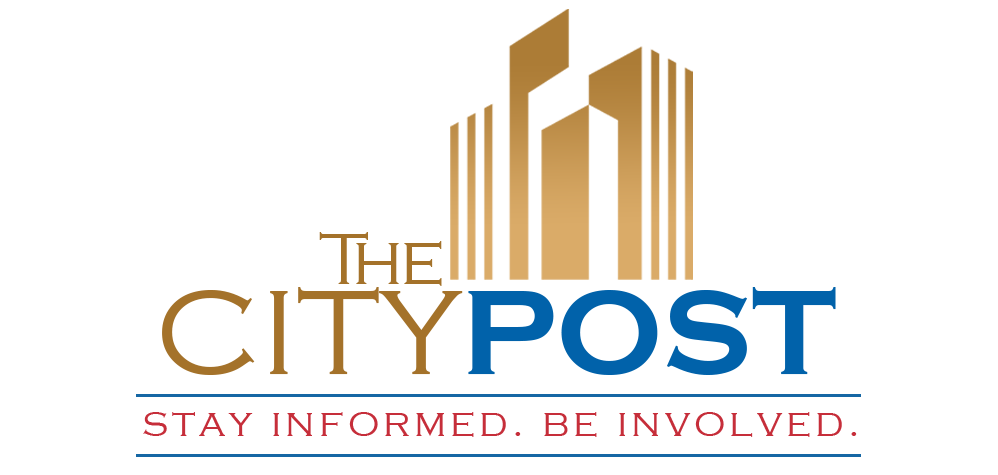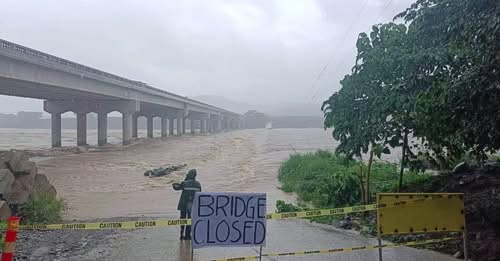PBBM presented his third State of the Nation Address last Monday. He actualized the presentation with much data from various agencies. According to his speech, the country’s poverty situation is quite good as of now. The aim of this article is to show the real situation of poverty under the Marcos administration as well as educate the readers on the situation of the Filipino people.
His speech was the same as that of former President Gloria Macapagal-Arroyo, wherein he presented the actual beneficiaries, particularly those who benefited from the Pantawid Pamilya Pilipino Program, known as the 4Ps. Unfortunately, the related data on poverty he presented was questionable. According to Bobbit Tiglao, it is impossible to lift 2.5 million Filipinos out of poverty in a short span of 18 months. Unless they used the beneficiaries of the “ayudas” that were being implemented in every congressional district for charter change petition signing called the people’s initiative, which was spearheaded by his cousin, Speaker of the House Ferdinand Martin G. Rodriguez. Thus, the SONA of the PBBM was showcased to carry out the inefficiency of the Marcos administration for the last two years.
Let me show the real poverty situation in the country. The World Bank projected a positive poverty outlook if the country continuously improved its labor market and implemented proactive government measures in response to escalating climate events such as droughts, floods, and other natural and man-made calamities. The improvement of the extensive labor market was introduced in the BARMM region. Consequently, improving the quality of job generation and household welfare are the major programs that reduce poverty incidence in the country. However, this measure could interfere with a higher inflation rate and continuing climate disturbances, of which the most likely affected are poor households.
According to the IBON Foundation, the poverty line grew by 1.3 million (21.3 million, or 76%), while the number of hungry families grew by 4 million (4 million, or 14%) as of March 2024. Further, the number of households without savings fell negligibly to 18.5 million (69% of the population) as of the 2nd quarter of 2024. PBBM reported to his SONA that the poverty incidence was registered at 10.9 percent as of December 2023, which is contrary to the data mentioned. So, the PBBM concealed the real poverty situation from the Filipino people. Why are the discrepancies different? PSA assumed that a family earning 100 pesos was considered poor, while the SWS assumptions were 500 pesos or less. PSA assumption is unrealistic because the daily needs of every family, according to the World Bank, are $3.65 per day. And the notion of the SWS is based on the current daily minimum earnings of an individual Filipino. So, the Marcos administration is hiding the realistic poverty situation to justify the ayuda program as a moderate approach to reducing poverty.
Recently, the SWS survey found that 58% of Filipinos are considered self-rated poor, an increase of 12% from the previous survey in March 2024 with 46%. Why are the majority of Filipinos rated as poor? The answer to this question is due to the high cost of commodities in the market, the increasing number of unemployed, and the poor quality of employment. In 2023, the inflation rate was quite high, at 6.1 percent, according to the Bangko Sentral ng Pilipinas. I commend the BSP as well as the NEDA for reducing it to 3.5 percent from January to June 2024. But the Filipino people are still suffering from the high cost of rice, petroleum products, foods, and others.
Second, the number of unemployed Filipinos is plummeting. With the ban on Philippine Overseas Gaming Operators (POGOs) turning into an Internet Gaming Licensee (IGL), it will lose 13,000 workers in the next few days. Based on the May 2024 PSA Report, the estimated employment rate reached 95.9 percent. Meanwhile, the estimated underemployment rate and unemployment rate were 9.9 percent and 4.1 percent, respectively. In contrast, the IBON Foundation challenged this data as dubious because, according to their findings, Filipino workers are experiencing poor quality employment. 48.2 million workers were employed, but 32.1 million workers are working informally. These informal workers are self-employed, work on family-owned farms and businesses, and provide domestic help, which reached 20.4 million in numbers. On the other hand, the majority of employed Filipinos are poorly paid, even wage and salary earners working at accommodation and food service activities, sale and retail, repair of motor vehicles and motorcycles, fishing and aquaculture, agriculture and forestry, and other service provider workers. The IBON Foundation reported that 56% of these workers earned 500 pesos in their daily wage or salary, while 23% of the workers earning above 500 pesos are those at sewage waste management, arts, entertainment and recreation, manufacturing, construction, mining, and quarrying. In sum, employment per se is dilated by a huge rural and urban informal sector.
Lastly, Sonny Africa of the IBON Foundation estimated that more than 1.9 million Filipinos are still jobless. This is contrary to the SONA statement by the PBBM that unemployment is getting better. In fact, there are an estimated 7 million Filipinos who have no work at the moment. Some economists predict that this will continue to rise during the ban on POGO operations.
Concluding Statement
The poverty situation under the PBBM administration is worsening. The obligatory branding of Bangon Pilipinas (transformation) to achieve genuine inclusive growth is based on pure assumptions. Philippine GDP growth is slowing and has been at its slowest for the past 12 years. Despite being the 2nd fastest-growing economy, the country is behind and the slowest among the ASEAN countries to recover after the pandemic. Also, the country has among the worst inflation (4th highest) and unemployment (2nd highest) in the region. In regards to our industry, the manufacturing sector has dropped to the smallest share of the economy in 75 years. Perhaps the agriculture industry is down to its smallest in the country’s history, contrary to the statement of the PBBM during his third SONA. Furthermore, the ayuda system and medical assistance program were being abused by the administration’s political patronage.
Both the World Bank and the IBON Foundation suggested short-term measures needed to address poverty. Continuously improving the labor market by implementing meaningful minimum wage hikes based on real value, implementing proactive measures in response to the larger emergency assistance program due to natural and man-made calamities, and expanding public education, health, and housing services are the urgent poverty program measures to reduce Filipino people living in poverty. Other long-term measures are structurally reformed to enhance local economic activities, agricultural production, affordable financing for the local industry, creating trade protection laws and regulations, agri-industry infrastructure, land distribution, and improving the capacity in operation of water, power, and transportation facilities.
In our reading today, the concern of Jesus is not the rich people because the rich have so many resources. Rich people should enhance spiritual maturity in order to help those in need of resources. They are the ones who provide resources for the ministry of the church. As we have more resources, we also care for the well-being of the poor by providing whatever excess resources we have. To become involved in the missionary journey of Jesus, we need to accept the vow to serve the poor as a missionary path. The community of the poor is our parish. When we help the poor further, we are expanding the reign of God to this early world, and then we are experiencing the reign of God not only in the other world known as the second life. In the book of Proverbs, it says that the righteous know the rights of the poor; the wicked have no such understanding. There are numerous ways to provide provision for the poor, and this is an opportunity for us to help them rather than consume our resources on our lavish acts.
Prayer
Oh God, the provider of life and resources. Please allow us to provide something we have to the needy person. Lord, you always remind us not to abandon our responsibility and duty to the people living in poverty. As you mentioned to us, your reign is for the poor. So, we need to respond immediately, providing what we have. This is our prayer, Amen.
References:
- Janvic Mateo (2024). Self-rated poverty dips, but hunger increases – poll. The Philippine Star January 27, 2024. (https://www.philstar.com/headlines/2024/01/27/2328879/self-rated-poverty-dips-hunger-increases-poll)
- Sonny Africa (2024). 5 economic distortions to watch out for in Marcos Jr’s 3rd SONA. IBON Foundation, July 22, 2024. (https://www.ibon.org/5-economic-distortions-sona-2024)
- NEDA (2024). Labor Market Recovery Continues, Next Challenge: Improve Job Quality. May 8, 2024. (https://neda.gov.ph/labor-market-recovery-continues-next-challenge-improve-job-quality-neda)
- PSA (2023). Self-rated poverty dips, but hunger increases – poll. Manila, Press Release – July 22, 2024.
- PSA (2024). Labor Force Survey (https://psa.gov.ph/statistics/labor-force-survey)
- RigobertoTiglao.com, July 24, 2024 (https://rigobertotiglao.com/2024/07/24/marcos-poverty-reduction-claims-highly-dubious).
- The World Bank (2024). Philippine Economic Update: Beyond the Numbers, Sustaining Poverty Reduction in BARMM. June 2024. (https://documents1.worldbank.org/curated/en/099060324081514520/pdf/P5007681e705060c4184fb187b187a5c81d.pdf)
Prof. Ruel D. Garcia is a faculty member of La Consolacion College Manila as well as the Editor-in-Chief of the International Journal on Culture, History, and Religion (IJCHR.paschr.ph).




